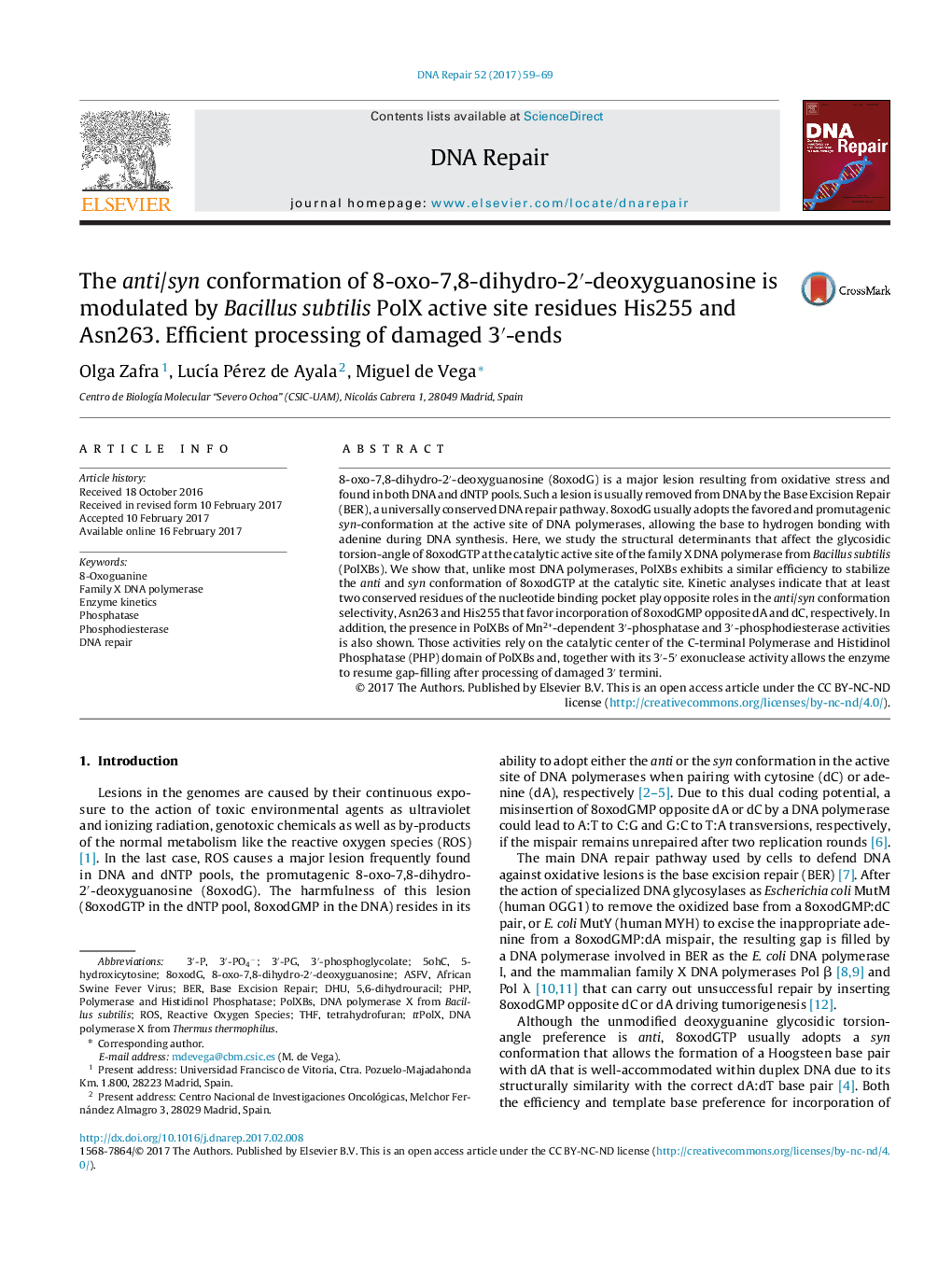| Article ID | Journal | Published Year | Pages | File Type |
|---|---|---|---|---|
| 5510999 | DNA Repair | 2017 | 11 Pages |
â¢PolXBs shows a similar efficiency to stabilize the anti and syn conformation of 8oxodGTP at the catalytic site.â¢The anti/syn equilibrium is kept by residues Asn263 and His255 that stabilize the syn and anti conformation, respectively.â¢In addition to the 3´-5´ exonuclease and AP-endonuclease, PolXBs is endowed with 3´-phosphatase/phosphodiesterase activities.â¢3´-5´ exonuclease, 3´-phosphatase and 3´-phosphodiesterase activities of PolXBs efficiently process damaged 3´-ends.â¢The results agree with a role for PolXBs in repairing the oxidative lesions that arise during the B. subtilis life cycle.
8-oxo-7,8-dihydro-2â²-deoxyguanosine (8oxodG) is a major lesion resulting from oxidative stress and found in both DNA and dNTP pools. Such a lesion is usually removed from DNA by the Base Excision Repair (BER), a universally conserved DNA repair pathway. 8oxodG usually adopts the favored and promutagenic syn-conformation at the active site of DNA polymerases, allowing the base to hydrogen bonding with adenine during DNA synthesis. Here, we study the structural determinants that affect the glycosidic torsion-angle of 8oxodGTP at the catalytic active site of the family X DNA polymerase from Bacillus subtilis (PolXBs). We show that, unlike most DNA polymerases, PolXBs exhibits a similar efficiency to stabilize the anti and syn conformation of 8oxodGTP at the catalytic site. Kinetic analyses indicate that at least two conserved residues of the nucleotide binding pocket play opposite roles in the anti/syn conformation selectivity, Asn263 and His255 that favor incorporation of 8oxodGMP opposite dA and dC, respectively. In addition, the presence in PolXBs of Mn2+-dependent 3â²-phosphatase and 3â²-phosphodiesterase activities is also shown. Those activities rely on the catalytic center of the C-terminal Polymerase and Histidinol Phosphatase (PHP) domain of PolXBs and, together with its 3â²-5â² exonuclease activity allows the enzyme to resume gap-filling after processing of damaged 3â² termini.
Graphical abstractDownload high-res image (178KB)Download full-size image
